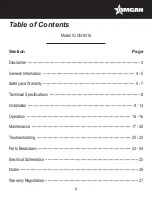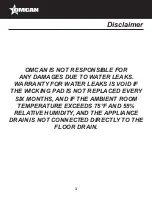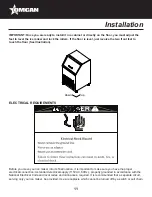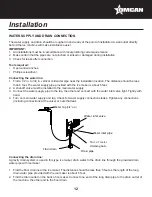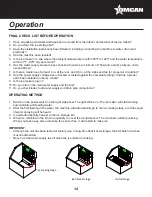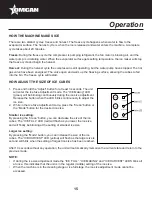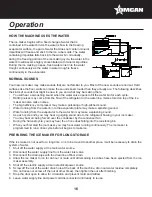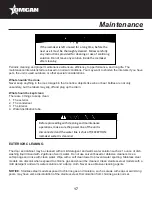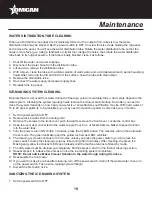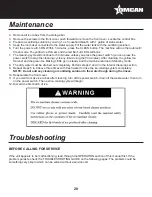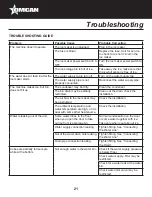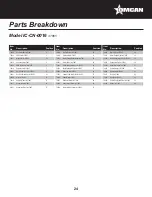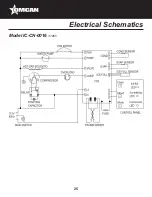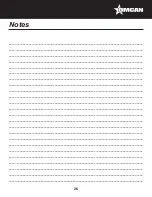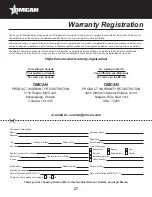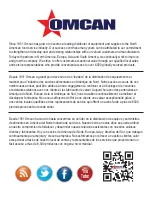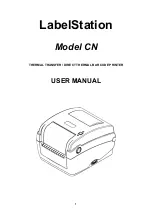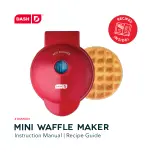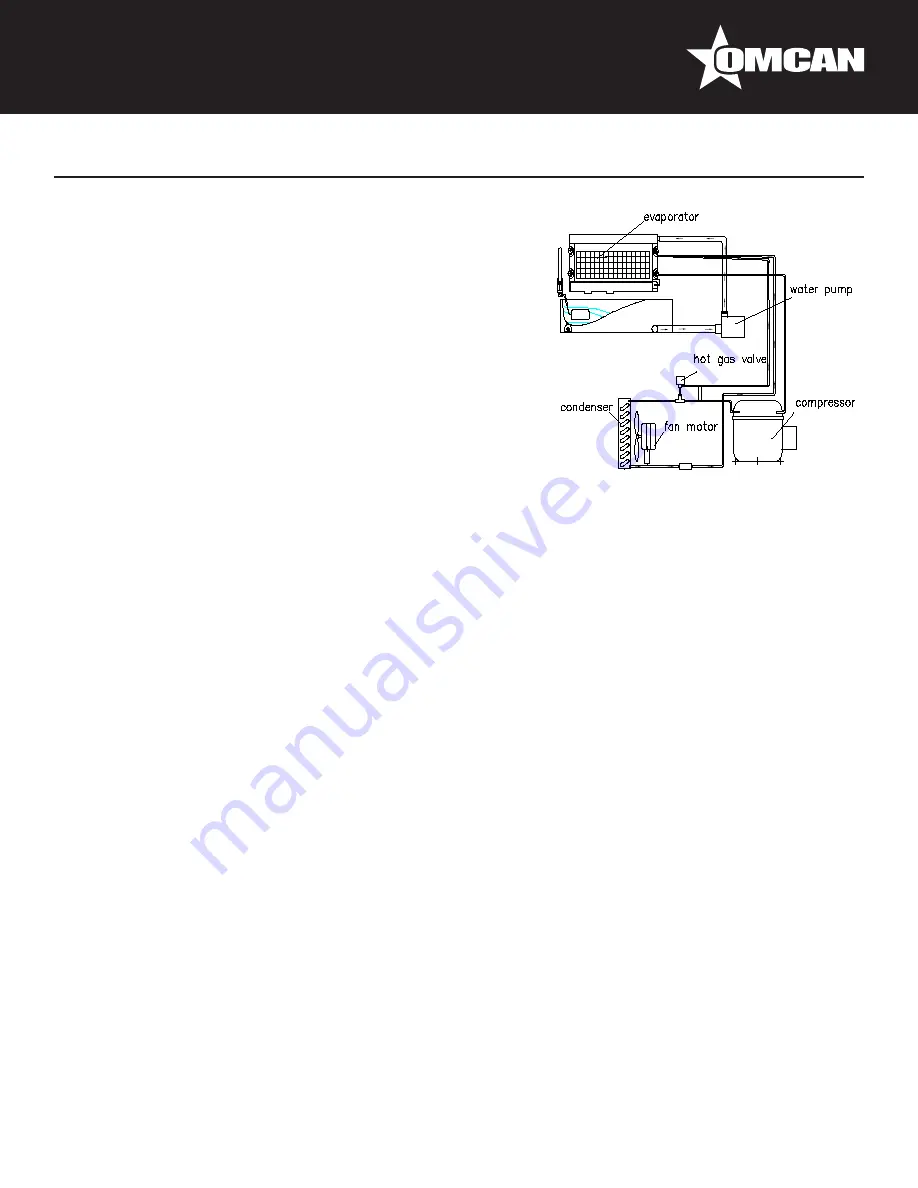
16
HOW THE MACHINE USES THE WATER
The ice maker begins with a fixed charge of water that is
contained in the water bin. As the water is flow to the freezing
evaporator surface, the part of water that does not contain mineral
impurities will freeze and stick to the ice cube molds. The water
containing impurities falls back into the water bin. Gradually,
during the freezing portion of the ice making cycle, the water in the
water bin will become highly concentrated with mineral impurities.
During the ice making process, fresh water enter into the water
trough continuously as the water in water trough is freeze
continuously in the evaporator.
NORMAL SOUNDS
Your new ice maker may make sounds that are not familiar to you. Most of the new sounds are normal. Hard
surfaces like the floor, walls can make the sounds seem louder than they actually are. The following describes
the kinds of sounds that might be new to you and what may be making them.
• You will hear a swooshing sound when the water valve opens to fill the water bin for each cycle.
• Ratting noises may come from the flow of the refrigerant or the water line, Items stored on top of the ice
maker can also make noises.
• The high efficiency compressor may make a pulsating or high-pitched sound.
•
Water running from the water bin to the evaporator plate may make a splashing sound.
•
Water running from the evaporator to the water bin may make a splashing sound.
• As each cycle ends, you may hear a gurgling sound due to the refrigerant flowing in your ice maker.
•
You may hear air being forced over the condenser by the condenser fan.
•
During the harvest cycle, you may hear the of ice cubes falling into the ice storing bin.
• When your first start the ice maker, you may hear water running continuously. The ice maker is
programmed to run a rinse cycle before it begins to make ice.
PREPARING THE ICE MAKER FOR LONG STORAGE
If the ice maker is not used for a long time, or is to be moved to another place, it will be necessary to drain the
system of water.
1. Shut off the water supply at the main water source.
2. Disconnect the water supply line from the water inlet valve.
3.
Disconnect the drain pipe with the drain line of floor drain.
4. Allow the ice maker to run for an hour or more until all remaining ice cubes have been ejected from the ice
maker assembly.
5. Shut off the electric supply at main electrical power source.
6. Screw off the nut of the water drain hole at the back of the machine, drain out water residue completely.
(Do not loosen or screw off the nut at other times), then tighten the nut after finishing.
7. Drop the door open to allow for circulation and prevent mold and mildew.
8. Leave water supply line and power cord disconnected until ready to reuse.
Operation

